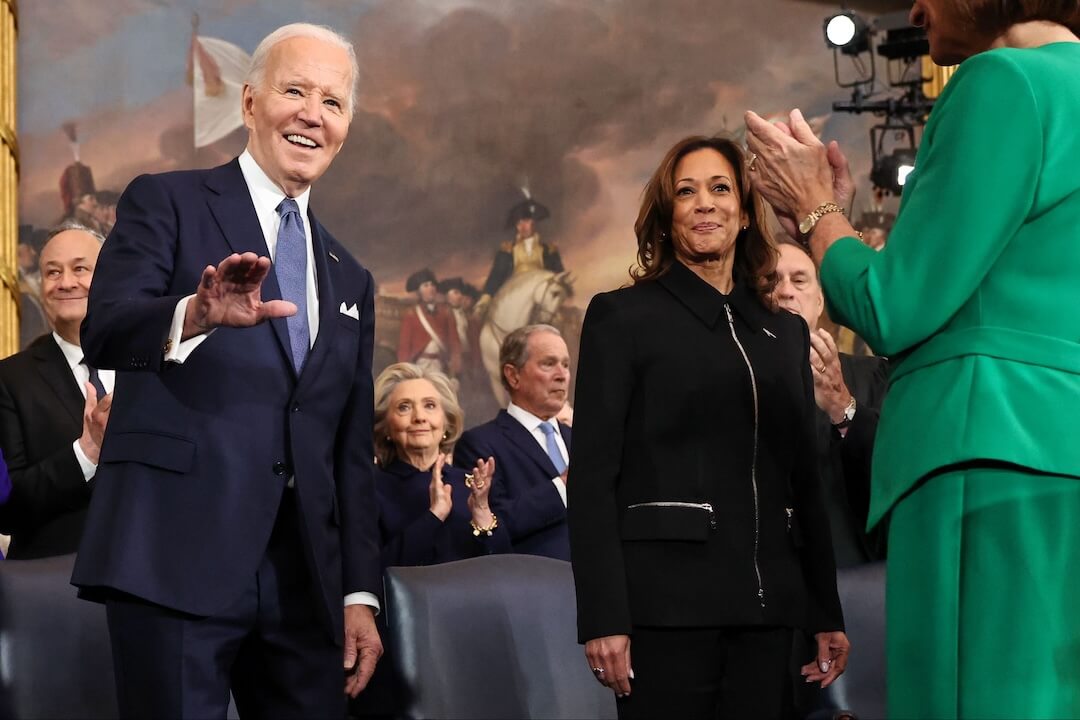
Flanked by Fred Ridley, left and Craig Heathley, Billy Payne, Chairman of the Augusta National Golf Club speaks to reporters during a practice round for the Masters golf tournament on April 8. (AP Photo/Chris Carlson)
Think about that for a moment: Two women sports columnists being prominently displayed by the one of the nation’s top circulation newspaper, and they were writing about the top men’s event in golf.
Did you notice?
“If people didn’t notice, that’s great,” Brennan said.
Indeed, the columns show how far women have come from the days, not that long ago, when they weren’t allowed in locker rooms. Women are read, seen and heard on various platforms in sports. It also should be noted the sports editor for that edition was Mary Byrne, who has since left the paper to join ESPN.com.
Yet that USA Today sports front, while an encouraging snapshot, doesn’t tell the entire story. Sadly in 2015, there still is a long way for women to go in sports media. In 2012, the Associated Press Sports Editors commissioned a report by the Institute for Diversity and Ethics in Sports. The grades for gender for total staff and sports editors: F. The situation hasn’t improved much since then.
The good and the bad will be discussed when http://www.betcode.co.uk launches their annual convention Saturday in Denver. The association is more commonly referred to as “awesome” based on its initials, AWSM.
AWSM has been awesome since its founding in 1987 and its first convention in 1988. The association has provided important networking and mentoring opportunities for women in sports media. It also has been a significant voice in speaking out about issues affecting women in the business.
In the late ‘80s, the notion of two women sports columnists on the front page of any U.S. sports section was unthinkable. Vicki Michaelis, the head of the sports media program for the University of Georgia, definitely noticed the first time she saw two women columnists on USA Today’s sports cover; There had been other occasions since Armour joined the paper in 2014.
“Of course, it struck me,” said Michaelis, a former Olympic writer at USA Today. “This most definitely is a sign of progress.”
Michaelis, though, expected more progress. She called the early ’90, when she started her career, “a golden age” for women. Pioneers like Brennan and others in the ‘70s and ‘80s blew open doors for young female sportswriters like Michaelis. However, 20 years later, women still make up roughly 10 percent of overall staff for newspaper sports sections.
“If you had asked me in 1995, what would sports departments look like in 20 years, I would have said women likely would have made up 25 percent,” Michaelis said. “And that might not have been optimistic enough. It’s very distressing there hasn’t been more growth.”
Brennan and Michaelis both point to the economic crisis in 2008 that led to major contraction in newsrooms as stunting the growth of women in sports media. They contend for fewer jobs. And reduced pay in sports departments had aspiring women journalists looking elsewhere.
However, they are optimistic the trend is reversing. The key is getting more women into the sports media pipeline. Last year, Brennan was ecstatic by what she saw at the AWSM convention.
“I think we had more students than working professionals,” Brennan said. “That is absolutely the best.”
Michaelis also is heartened by seeing women go through her program and land jobs during her three years at Georgia. She says it is essential for her female students to see role models in the business.
“So many of them want to be sideline reporters, because they see women filling those jobs,” Michaelis said. “Not to diminish what a sideline reporter does, but there are so many other possibilities. Being a sideline reporter is a rung in the ladder. It’s not the top rung.
“I say look at what [Brennan and Armour] are doing at USA Today. That’s something to aspire to. I feel I have an impact as a woman in charge of this program.”
Michaelis will be at the AWSM convention, as will Brennan. The annual gathering has special meaning for Brennan. She awards scholarships in honor of her parents, Jim and Betty Brennan.
Brennan’s hope is the recipients will go on to have thriving careers and perhaps follow in her footsteps as a sports columnist for a major publication or outlet. She believes if more women receive opportunities, the day of seeing two women columnists on a sports front page won’t seem like “an anomaly.”
“What would I like to see 10 years from now?” said Brennan on sharing the USA Today sports front with Armour. “More of this. A lot more of this.”
****
Recommended reading on sports journalism:
Will Leitch for Sports on Earth details why ESPN will miss Bill Simmons.
Dan Levy of Awful Announcing writes about an issue involving plagiarism for a Runner’s World columnist.
The Chicago Tribune’s Dan Wiederer, writing for APSE’s site, gets insights from NFL reporters on covering the recent draft.
****
Ed Sherman writes about sports media at shermanreport.com. Follow him @Sherman_Report.






